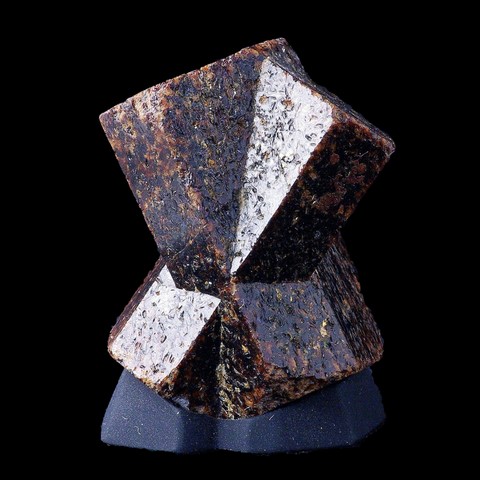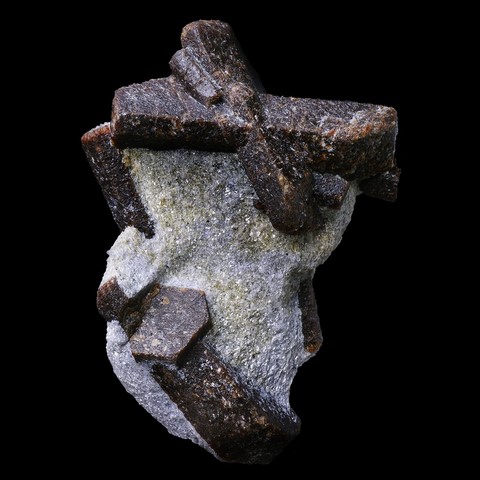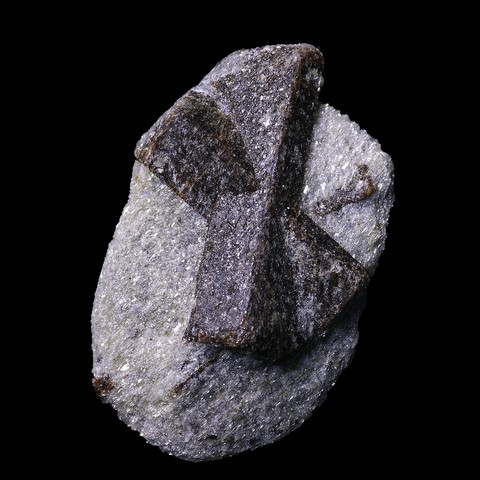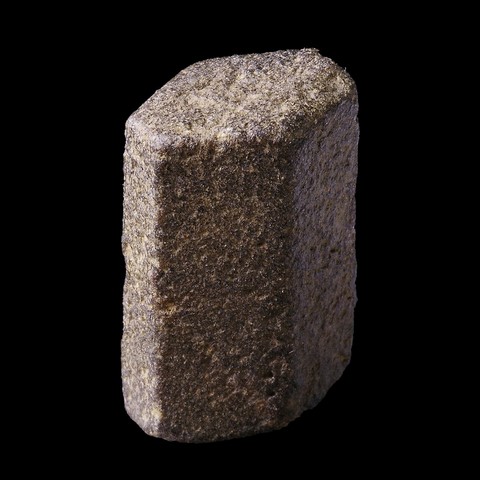 Staurolite - Encyclopedia
Staurolite - Encyclopedia
Class : Silicates
Subclass : Nesosilicates
Crystal system : Monoclinic
Chemistry : Fe2Al9(Si, Al)4O22 (OH)2
Rarity : Very common
Staurolite is a typically metamorphic mineral found in mica-schists and gneisses, and more generally in most clay rocks that have undergone amphibolite facies metamorphism (high temperature - medium pressure). Its name comes from the Greek stauros (cross) and lithos (stone), because this mineral is often found cross twinned. It is a common mineral of brown-red color, opaque, with a vitreous luster, occurring in prismatic crystals with a diamond section, commonly twinned in a cross at 60° or 90°. Staurolite is sometimes associated with kyanite as in the paragonitic schist deposit of Pizzo Forno (Ticino, Switzerland in superb brown crystals sometimes reaching 10 cm), or in the mica schists of Brittany. Some varieties contain manganese (nordmarkite) or cobalt (lusakite from Zambia). Staurolite is used locally as a costume jewelry, very rare gemmy crystals have occasionally been cut.
Staurolite in the World
Staurolite in France
Among the many deposits of staurolite, the classic French deposits of Coray (Finistère), where some exceptional crystals reach 20 cm, and Baud (Morbihan) are considered to be the best occurrences in the world. Its popular name of "Croisette de Bretagne", which designates the crystals twinned at 90°, reflects this past abundance in the Brittany sites. The largest known twinned crystal was discovered near the farm in Kerzest en Coray, it measures nearly 9 cm and is kept at the Ecole des Mines in Paris.
Twinning and special crystallization
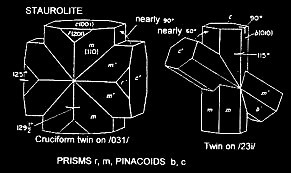
Twins at 60 degrees are frequent on {231}, we speak of St-André twins and it can be cyclical. They are less common on {031} and form crosses at 90 degrees, one speaks then of Croisette twins. A third twin is described on {320} but is very rare.
Fakes and scams
No fake recorded for this mineral.
Hardness : 7 to 7.5
Density : 3.74 to 3.83
Fracture : Sub-conchoidal
Trace : White to gray
TP : Opaque to transparent
RI : 1.736 to 1.762
Birefringence : 0.009 to 0.015
Optical character : Biaxial +
Pleochroism : Strong
Fluorescence : None
Solubility : Sulfuric acid
Magnetism : Paramagnetic
Radioactivity : None

